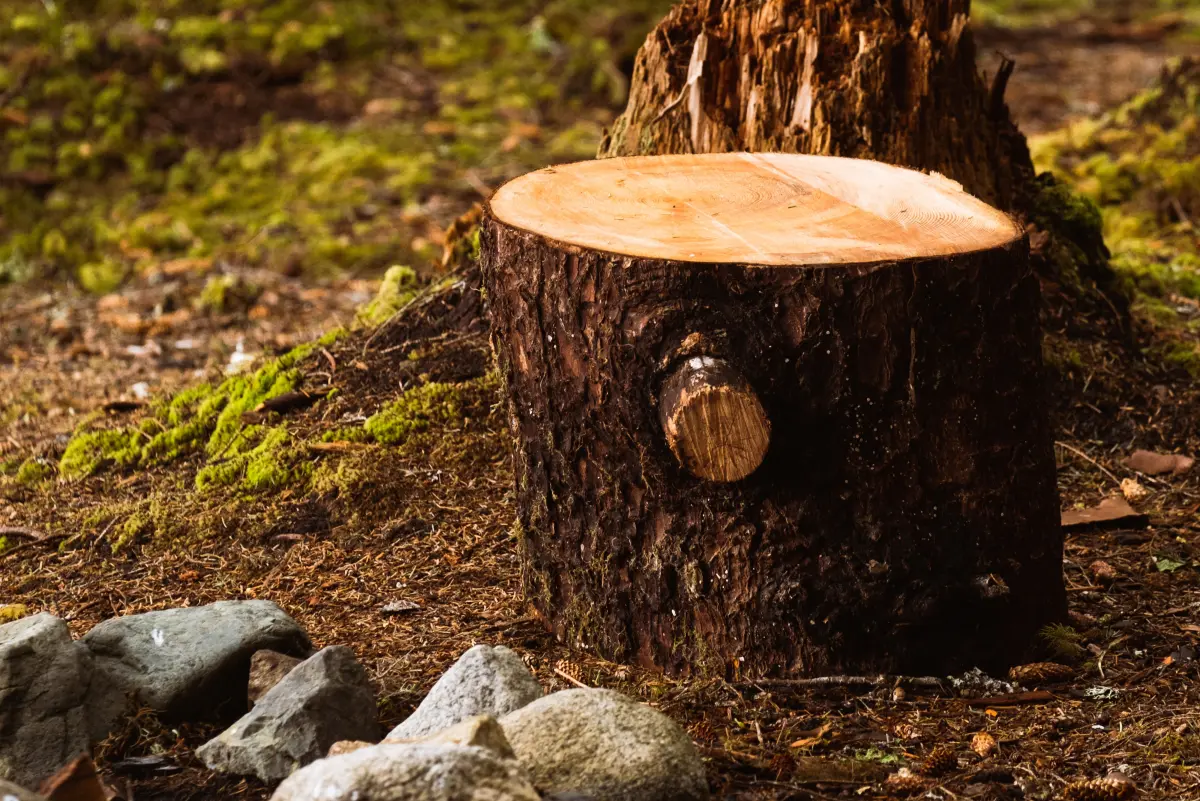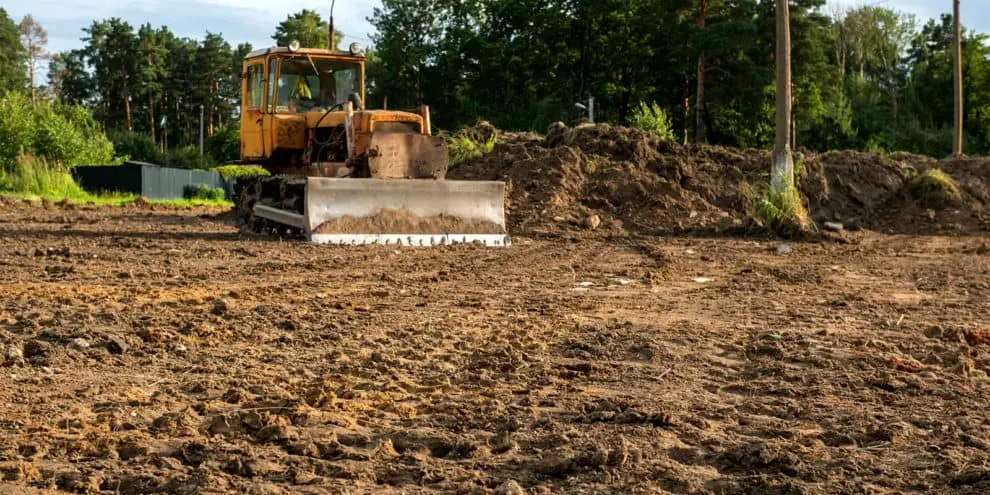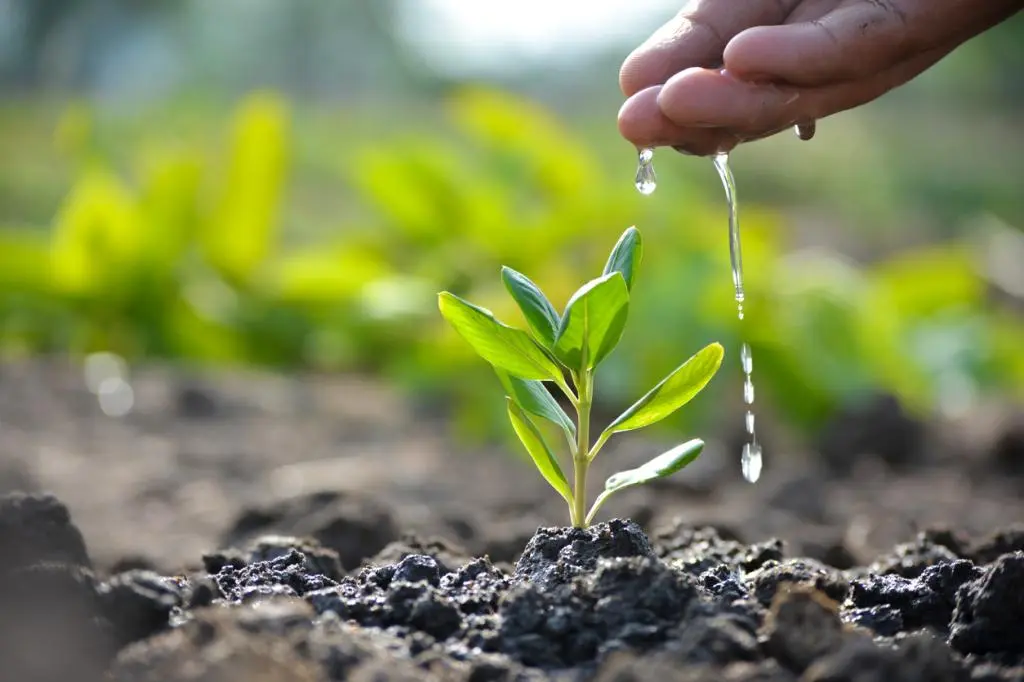Expert Advice: When and How to Stump Your Trees
Stump removal is a crucial aspect of land management and landscaping. It involves completely removing tree stumps from the ground after a tree has been cut down. This process is essential for several reasons, including aesthetics, safety, and environmental health.
When a tree is taken down, the stump left behind can be unattractive and detract from the overall aspect of the area. Removing the stump helps improve the area's visual appeal, making it more attractive and functional.
Additionally, stumps can pose safety hazards, especially in high-traffic areas such as yards, parks, or streets.
From an environmental perspective, stumps can hinder new growth and interfere with planting new trees or plants. They can also attract pests and fungi that can harm other nearby plants.
Stump removal is necessary to ensure an area's safety, aesthetics, and environmental health.
Signs That Stumping is Necessary
Several signs indicate that stump removal, or stumping, is necessary for the health and safety of your property.
One of the most common reasons for stump removal is the tree's health. Diseased or rotting trees can pose a risk to other plants in the area. Signs of tree disease include discolored leaves, unusual growths, and dead branches. If you notice these signs, it may be necessary to remove the stump to prevent the spread of disease to other plants.
Stumps can also pose safety hazards, especially where people frequently walk or play. They can be tripping hazards, mainly if they are hidden by grass or other vegetation. Also, stumps can damage lawn care equipment such as lawnmowers, which can be costly.
Recognizing the signs that stump removal is necessary can help you maintain a safe and healthy environment on your property.

Timing: When to Stump Your Trees
Knowing when to stump your trees is crucial for ensuring the health of your landscape. Several factors can influence the timing of stump removal, including the tree species, its growth patterns, seasonal considerations, and the impact on surrounding vegetation.
Different tree species have varying growth patterns, which can affect when it is best to remove the stump. Some trees, such as oak or pine, have deep roots, making stump removal more challenging. Other species, like maple or birch, have shallow roots that may require less effort to remove. Understanding the growth patterns of the trees on your property can help you determine the best time to stump them.
Seasonal considerations also play a role in stump removal. During this time, trees are not actively growing, making it easier to remove the stump without damaging surrounding vegetation.
Finally, consider the impact that stump removal will have on surrounding vegetation. Stump removal can disturb the soil and disrupt the root systems of nearby plants. It is essential to consider the health of surrounding vegetation and plan stump removal accordingly.
Understanding the species of trees on your property, their growth patterns, seasonal considerations, and the impact on surrounding vegetation can help you determine the best time to stump your trees. By timing stump removal correctly, you can ensure the health and aesthetics of your landscape.
Methods of Stump Removal
Stump removal can be accomplished using several methods, each with benefits and considerations.
Manual stump removal involves digging or chopping the stump out of the ground. This method is labor-intensive and may require special tools such as axes, shovels, and matting. Manual removal is best suited for small stumps or areas with limited access to machinery.
Mechanical methods, like stump grinders, are more efficient for handling giant stumps. A stump grinder is a heavy-duty machine for grinding stumps and roots into tiny fragments. This procedure is speedier and less physically demanding than manual removal.
Chemical procedures entail employing stump remover chemicals to speed up the disintegration of the stump. These chemicals are put to the stump and break down the wood over time, making removal easier. Chemical stump removal is less labor-intensive than manual or mechanical methods but can take several weeks or months.
To remove a stump, choose a procedure based on its size, budget, and level of work.
Factors Affecting Stump Removal
Several factors can affect the ease and method of stump removal. Understanding these factors can help you determine the best approach for removing a stump from your property.
Tree size and age play a significant role in stump removal. Larger, older trees tend to have more essential and extensive root systems, making stump removal more challenging. Smaller, younger trees, on the other hand, may have shallower root systems that are easier to remove.
The depth of the root system is another essential factor to consider. Some trees have deep roots that can extend several feet into the ground, while others have shallow roots that are easier to remove. The depth of the root system can influence the method of stump removal, with deeper roots often requiring more specialized equipment or techniques.
Soil conditions can also impact stump removal. Soft, loamy soil is more accessible for digging and removing stumps than hard, compacted soil. Wet soil can make stump removal more challenging due to increased resistance when digging or using machinery.
Tree size and age, depth of the root system, and soil conditions are all factors that can affect stump removal.
Cost Considerations
When considering stump removal, it's essential to factor in the costs associated with the different methods available. Understanding these costs can help you decide based on your budget and needs.
Manual stump removal methods, such as digging or chopping, are typically the least expensive.
Mechanical stump removal options, such as utilizing a stump grinder, are more expensive than manual ones but usually faster and entail less physical labor.
Chemical stump removal methods are often the least expensive option upfront but can take several weeks or months to complete. Additional costs may be associated with disposing of the stump and any leftover chemicals.
In addition to stump removal costs, there may be additional costs to consider. Disposing of the stump and debris can incur extra fees, especially if you need a professional removal service. Additionally, if stump removal impacts your landscaping, there may be costs associated with restoring or replanting the area.
Overall, it's essential to consider the upfront costs and any additional costs associated with stump removal when deciding on the best approach for your needs.
DIY vs. Professional Stump Removal
When removing a stump from your property, you have two main options: doing it yourself (DIY) or hiring a professional. Each approach has pros and cons, safety, and legal considerations.
DIY stump removal can be cost-effective, especially for small stumps or if you already have the necessary tools and equipment. This can be a gratifying DIY project for those who enjoy working outside. However, it can be challenging and time-consuming, particularly for more giant or stumps. Ignoring necessary safety precautions increases the risk of injury.
Professional stump removal might be more expensive than DIY approaches, so it's essential to consider the expense against the convenience.
Safety is crucial when removing a stump, whether you do it yourself or hire a professional. Stump removal might include heavy equipment and tools; therefore, gloves, goggles, and strong footwear are required. Furthermore, depending on your area, there may be legal problems, such as acquiring permits or following municipal standards for stump removal.
The choice between DIY and professional stump removal depends on your budget, the size and complexity of the job, and your comfort level with undertaking the task yourself.
FAQs
1. Q: How much does stump removal cost?
A: The cost of stump removal varies according to the size of the stump, the technique of removal, and the location. On average, stump removal can cost anywhere from $75 to $150 for DIY methods, while professional stump removal services may charge between $150 and $500 per stump.
2. Q: How long does it take to remove a stump?
A: The time it takes to remove a stump can vary depending on the method used and its size. Manual removal can take several hours, while mechanical methods, such as stump grinding, can be completed in as little as an hour.
3. Q: Is stump removal necessary after tree removal?
A: Stump removal is only sometimes necessary after tree removal, but it is recommended for several reasons. Stumps can be ugly and may attract pests. They can also constitute a safety risk, particularly in high-traffic locations.
4. Q: Can I remove a stump myself?
A: It is possible to remove a stump yourself using manual or chemical methods. However, stump removal can be labor-intensive and time-consuming, so assess the benefits and drawbacks before attempting it yourself.
5. Q: Are there any legal considerations for stump removal?
A: In some areas, stump removal regulations or permits may be required, especially if it involves heavy machinery. Before starting any stump removal project, speak with local authorities to ensure compliance with rules and regulations.
Conclusion
Stump removal is an important aspect of landscaping and land management, essential for maintaining your property's health, safety, and aesthetics. Understanding the factors that affect stump removal, such as tree size, root depth, and soil conditions, can help you determine the best approach for your needs. Whether you remove a stump yourself or hire a professional, it's essential to consider each method's costs and safety implications.
Ready to remove that unsightly stump from your yard? Contact us today for a free quote, and let our team of experts handle the job for you. With our professional stump removal services, you can enjoy a safer, more beautiful outdoor space without the hassle. Schedule your stump removal service today and take the first step towards a cleaner, greener landscape.




